12/16/2022
A Closer Look – P&G’s First Year Progress Toward Net Zero 2040
On the journey to Net Zero, we’re addressing climate change and making a difference in our home, your home and the planet we call home.
In September 2021, P&G announced an ambition to achieve net zero greenhouse gas (GHG) emissions across our supply chain and operations by 2040, from raw material to retailer. We plan to share successes and setbacks on our journey to Net Zero.
In December 2022, P&G released our Citizenship Report, which shares the progress towards our goals. It’s a moment to reflect on the impact we’ve made and the insights we’ve learned.
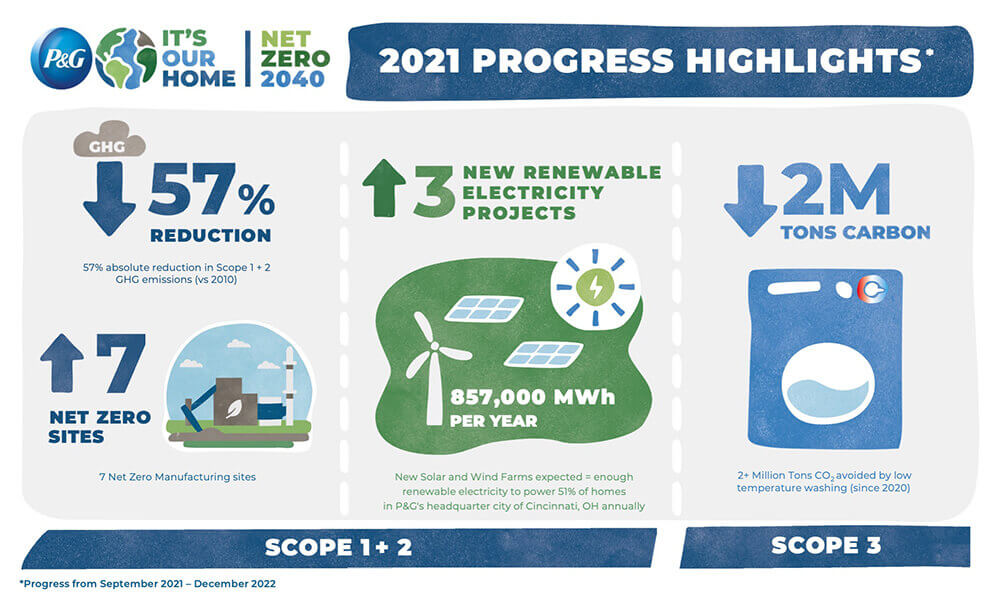
What progress has P&G made in the past year?
Achieving a 57% reduction in Scope 1 and 2 GHG emissions since 2010, already exceeding our Science Based Targets Initiative (SBTi) validated 2030 target of a 50% reduction. Scope 1 are direct GHG emissions from P&G sites. Scope 2 are emissions associated with energy purchased for P&G sites. You can learn more about these here.
Purchasing 99% renewable electricity globally toward a 100% goal by 2030. This progress helps us reach our Scope 1 and 2 GHG emissions reduction goal and increases the amount of renewable electricity available for everyone through Power Purchase Agreements, which have helped enable new wind and solar energy arrays in Spain and North America to be built.
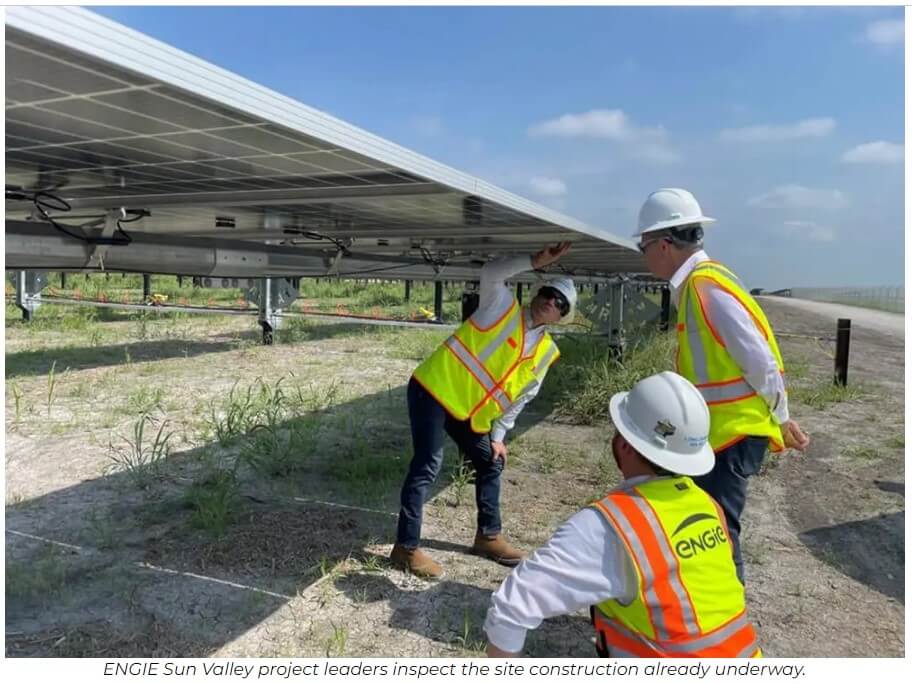
Progressing Toward our Scope 3 GHG Emissions Reduction Targets, validated by SBTi.
Our science-based target for Scope 3 is to reduce supply chain GHG emissions by 40% per unit of production by 2030 vs. 2020 baseline. Scope 3 GHG emissions are from purchased goods and services, including transportation of raw materials to P&G facilities and distribution of finished products from P&G to retail partners.
In reducing Scope 3 GHG emissions, we’ve focused on where we can make the biggest impact:
- Prioritizing the approximate 10% of our ingredients first, which account for approximately 90% of our supply chain emissions, to drive change and advance better solutions.
- Partnering with the World Business Council for Sustainable Development’s (WBCSD) Partnership for Carbon Transparency and others to drive the common data standards & methodologies necessary to move the entire industry forward. And as a founding member of the Sustainable Freight Buying Alliance to accelerate the scaling of new, innovative transportation technologies.
- Scaling efficiencies in transportation to optimize container fill rates and shift to more train and boat transportation with a lower carbon footprint.
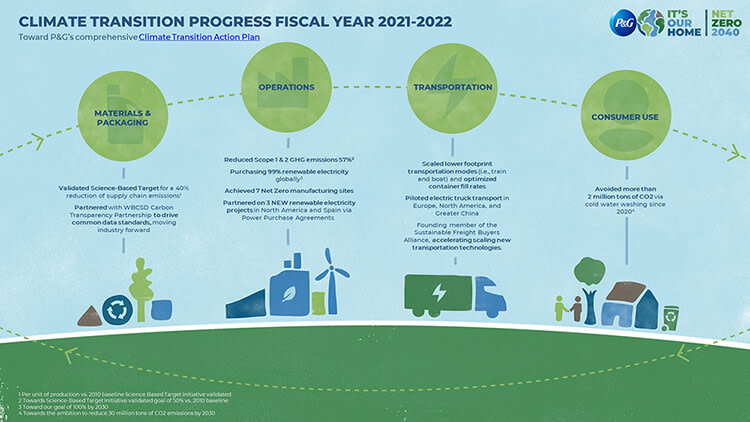
What have you learned on the journey to 2040 that will help others as we take collective action?
P&G remains committed to not only transforming how we operate but also sharing what we’ve learned along the way. Over the past 12 months, three things stand out.
#1: Test Small, Scale Big
Net Zero Manufacturing Sites. Our ambition is to obtain net zero GHG emissions from our manufacturing plants and additional facilities. We have achieved seven net zero sites where each has removed virtually all GHG emissions generated at their locations, including the latest in Jijona, Spain, and Lougang, China. We are reapplying the solutions from these locations at other P&G facilities worldwide.
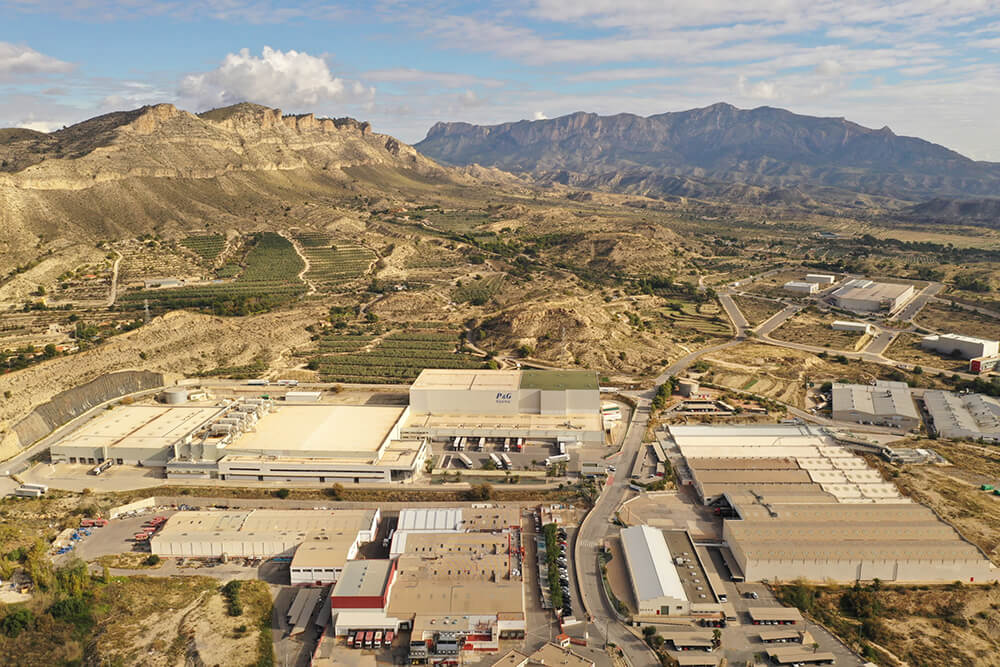
Scaling Solutions. Through Sustainability Solutions, by P&G Ventures, we’ve scaled P&G-created technologies with external partners to help other companies solve their toughest sustainability challenges in areas such as plastic and packaging.
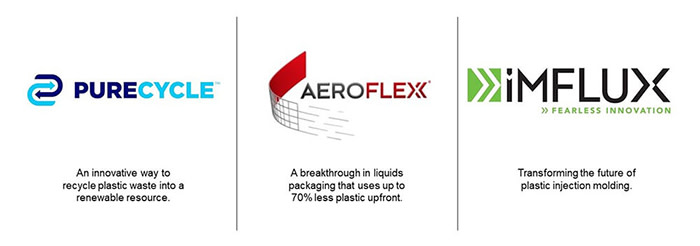
#2: Supporting Today and Scaling for Tomorrow
P&G’s primary strategy to meet our goal of purchasing 100% Renewable Electricity by 2030 is to help bring new renewable electricity projects online through long-term Power Purchase Agreements [PPAs].
As we progress these partnerships, we also buy Renewable Energy Credits [RECs]. RECs support current clean energy projects, as PPAs help expand more clean energy for everyone. Both are important to make progress in greening the power grid.
#3: Collaboration Creates Change
Combining P&G innovation capability and collaboration with leading external partners enables more impact and more reach. P&G Fabric Care brands Tide and Ariel help demonstrate how we partner with suppliers, environmental groups, retailers and people who use our products to drive impact — from product formulation to their use in people’s homes.
We are lowering our environmental footprint through partnerships with suppliers like Twelve, which Tide is leveraging for their technologies that capture carbon out of the atmosphere to create ingredients that can be used in the brand’s product. To date they have been able to prove one ingredient and are now moving towards using that ingredient in their product while exploring further discoveries.
We are enabling people who use Tide and Ariel products to reduce their environmental footprint across all steps of the consumer journey. First, with WWF we are exploring ways to instigate habit change so more people adopt cold water washing habits at home. At the shelf, our retailers partner with brands to share the multiple benefits of washing in cold water to drive habit change. And in 2021, Ariel and Tide enabled the people who use their products to avoid more than 2 million tons of CO2 emissions towards an ambition to reduce 30 million tons of CO2 emissions by 2030 vs. 2020 baseline, through cold water washing, product innovation and new education campaigns.
So, what's next for P&G sustainability efforts?
On our journey to 2040, we’re making small steps that are turning into bigger strides. We’re proud to continue accelerating climate action through our passionate employees, our household brands and with the expertise and impact of our partners. Learn more from our Chief Sustainability Officer Virginie Helias about how we are helping to protect our shared home, now and for generations to come. Read more about our Sustainability progress in our latest Citizenship Report.